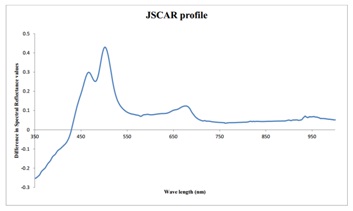biological invasion by invasive plant species is an imminent threat to our environment with consequent loss of endemic biota, changes in ecosystem function, alteration of nutrient cycles and ultimately threatening human health itself. Apart from identifying the inherent qualities of the exotic species, this study was carried out to quantify the photosynthetic stress exerted by the invading plant species on the native plants. Two invasive creepers Merremia vitifolia and Mikania micrantha were identified for this purpose as they were ranked high in the high risk category of invasive plants. The stress was quantified by collecting the RGB (Red Green Blue) values, which were converted into Hue Intensity Saturation (HIS) values to estimate the light intensity. Quantitatively estimate how much of the incident light intensity was lost because of invasive species. Statistical analysis of the results showed that the intensity of invasive stress is high enough to wipe out native biota. Co-flowering similar colour native and invasive flowers spectral reflectance values were analyzed. Using an ASD field spectrometer the reflectance spectrum from 350 nm to 1000 nm wavelength was measured and compared. Spectral reflectance values of invasive flower are statistically more significant than native flower, which means that it would attract more pollinators than the native flowers, thereby contributing to an increase in the number of invasive plants.
